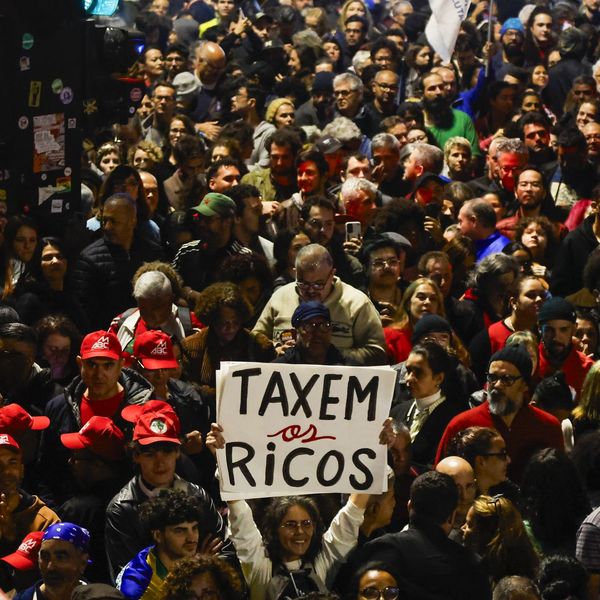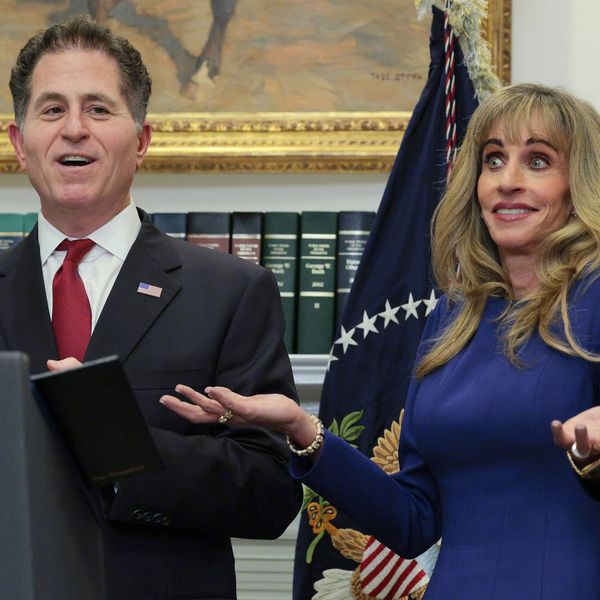Wealth Gap Between Rich and Poor Americans Highest on Record
New analysis from Pew Research Center finds that economic gains of the wealthiest continue to soar as the middle-class and low-income families face chronic stagnation
The gulf between rich and poor people in America has hit a new record.
An analysis released Wednesday by Pew Research Center finds that the wealth gap between the top 21 percent of families and everyone else is the widest since the Federal Reserve began collecting such income data 30 years ago.
Last year, the median wealth of upper-income families ($639,400) was almost seven times that of middle-income families and nearly 70 times that of lower-income families.
Measured as the "difference between the value of a family's assets (such as financial assets as well as home, car and businesses) and debts," wealth is an "important dimension of household well-being because it's a measure of a family's 'nest egg' and can be used to sustain consumption during emergencies (for example, job layoffs) as well as provide income during retirement," the report notes.
"The latest data reinforces the larger story of America's middle-class household wealth stagnation over the past three decades," the report states. "The Great Recession destroyed a significant amount of middle-income and lower-income families' wealth, and the economic 'recovery' has yet to be felt for them."
The findings follow another Pew analysis published last week which finds that U.S. wealth inequalities along racial lines have dramatically worsened since the Great Recession, with the gap between white and black people at its highest in 25 years.
According to that study, which also looks at Federal Reserve data, in 2013 white household wealth was 13 times that of black households and 10 times that of Hispanic households.
An Urgent Message From Our Co-Founder
Dear Common Dreams reader, The U.S. is on a fast track to authoritarianism like nothing I've ever seen. Meanwhile, corporate news outlets are utterly capitulating to Trump, twisting their coverage to avoid drawing his ire while lining up to stuff cash in his pockets. That's why I believe that Common Dreams is doing the best and most consequential reporting that we've ever done. Our small but mighty team is a progressive reporting powerhouse, covering the news every day that the corporate media never will. Our mission has always been simple: To inform. To inspire. And to ignite change for the common good. Now here's the key piece that I want all our readers to understand: None of this would be possible without your financial support. That's not just some fundraising cliche. It's the absolute and literal truth. We don't accept corporate advertising and never will. We don't have a paywall because we don't think people should be blocked from critical news based on their ability to pay. Everything we do is funded by the donations of readers like you. Will you donate now to help power the nonprofit, independent reporting of Common Dreams? Thank you for being a vital member of our community. Together, we can keep independent journalism alive when it’s needed most. - Craig Brown, Co-founder |
The gulf between rich and poor people in America has hit a new record.
An analysis released Wednesday by Pew Research Center finds that the wealth gap between the top 21 percent of families and everyone else is the widest since the Federal Reserve began collecting such income data 30 years ago.
Last year, the median wealth of upper-income families ($639,400) was almost seven times that of middle-income families and nearly 70 times that of lower-income families.
Measured as the "difference between the value of a family's assets (such as financial assets as well as home, car and businesses) and debts," wealth is an "important dimension of household well-being because it's a measure of a family's 'nest egg' and can be used to sustain consumption during emergencies (for example, job layoffs) as well as provide income during retirement," the report notes.
"The latest data reinforces the larger story of America's middle-class household wealth stagnation over the past three decades," the report states. "The Great Recession destroyed a significant amount of middle-income and lower-income families' wealth, and the economic 'recovery' has yet to be felt for them."
The findings follow another Pew analysis published last week which finds that U.S. wealth inequalities along racial lines have dramatically worsened since the Great Recession, with the gap between white and black people at its highest in 25 years.
According to that study, which also looks at Federal Reserve data, in 2013 white household wealth was 13 times that of black households and 10 times that of Hispanic households.
The gulf between rich and poor people in America has hit a new record.
An analysis released Wednesday by Pew Research Center finds that the wealth gap between the top 21 percent of families and everyone else is the widest since the Federal Reserve began collecting such income data 30 years ago.
Last year, the median wealth of upper-income families ($639,400) was almost seven times that of middle-income families and nearly 70 times that of lower-income families.
Measured as the "difference between the value of a family's assets (such as financial assets as well as home, car and businesses) and debts," wealth is an "important dimension of household well-being because it's a measure of a family's 'nest egg' and can be used to sustain consumption during emergencies (for example, job layoffs) as well as provide income during retirement," the report notes.
"The latest data reinforces the larger story of America's middle-class household wealth stagnation over the past three decades," the report states. "The Great Recession destroyed a significant amount of middle-income and lower-income families' wealth, and the economic 'recovery' has yet to be felt for them."
The findings follow another Pew analysis published last week which finds that U.S. wealth inequalities along racial lines have dramatically worsened since the Great Recession, with the gap between white and black people at its highest in 25 years.
According to that study, which also looks at Federal Reserve data, in 2013 white household wealth was 13 times that of black households and 10 times that of Hispanic households.

